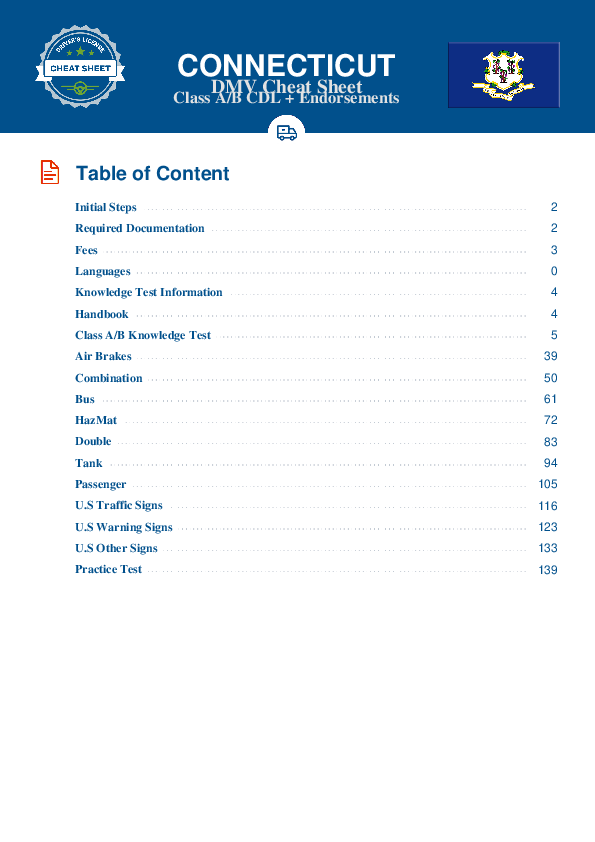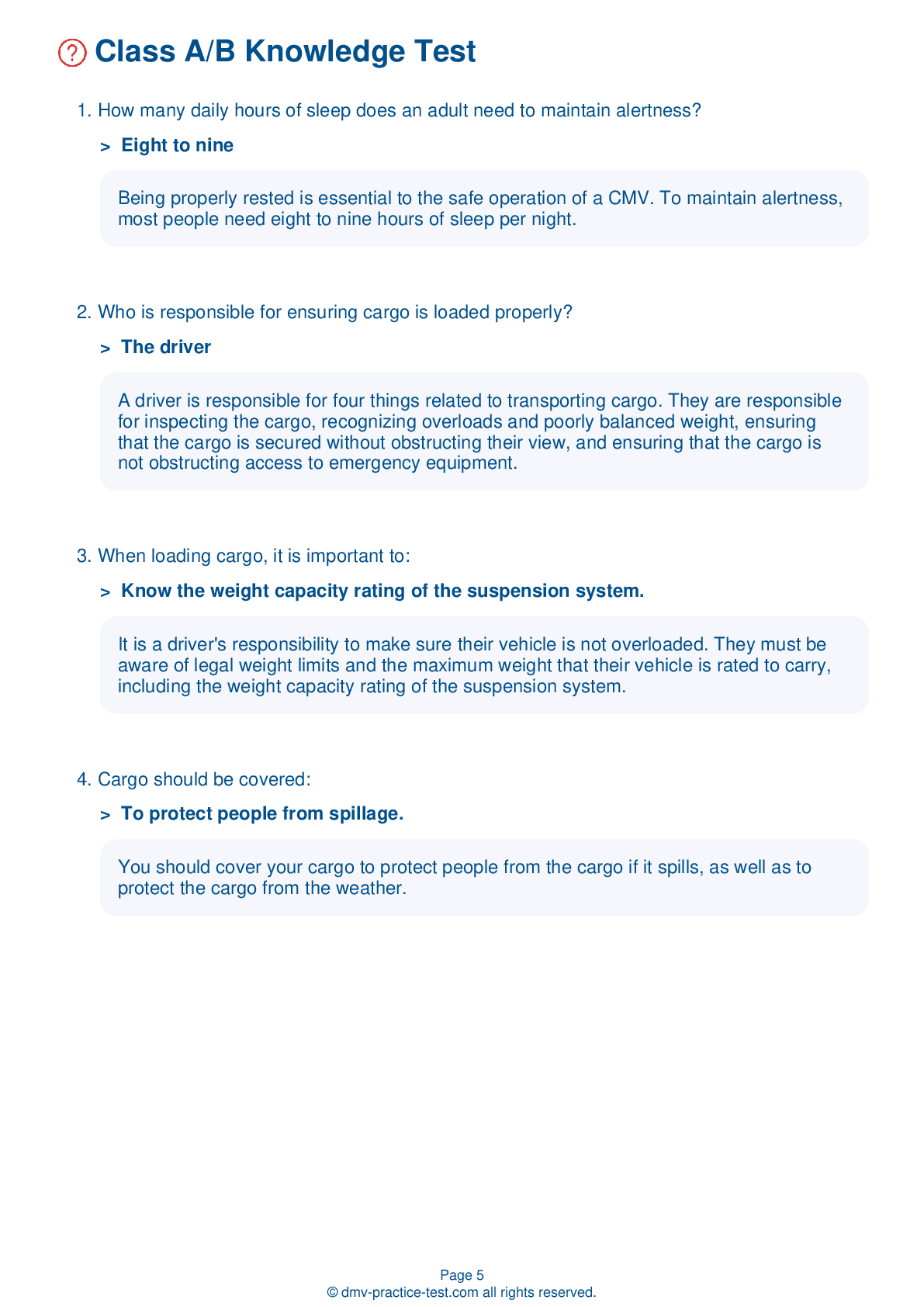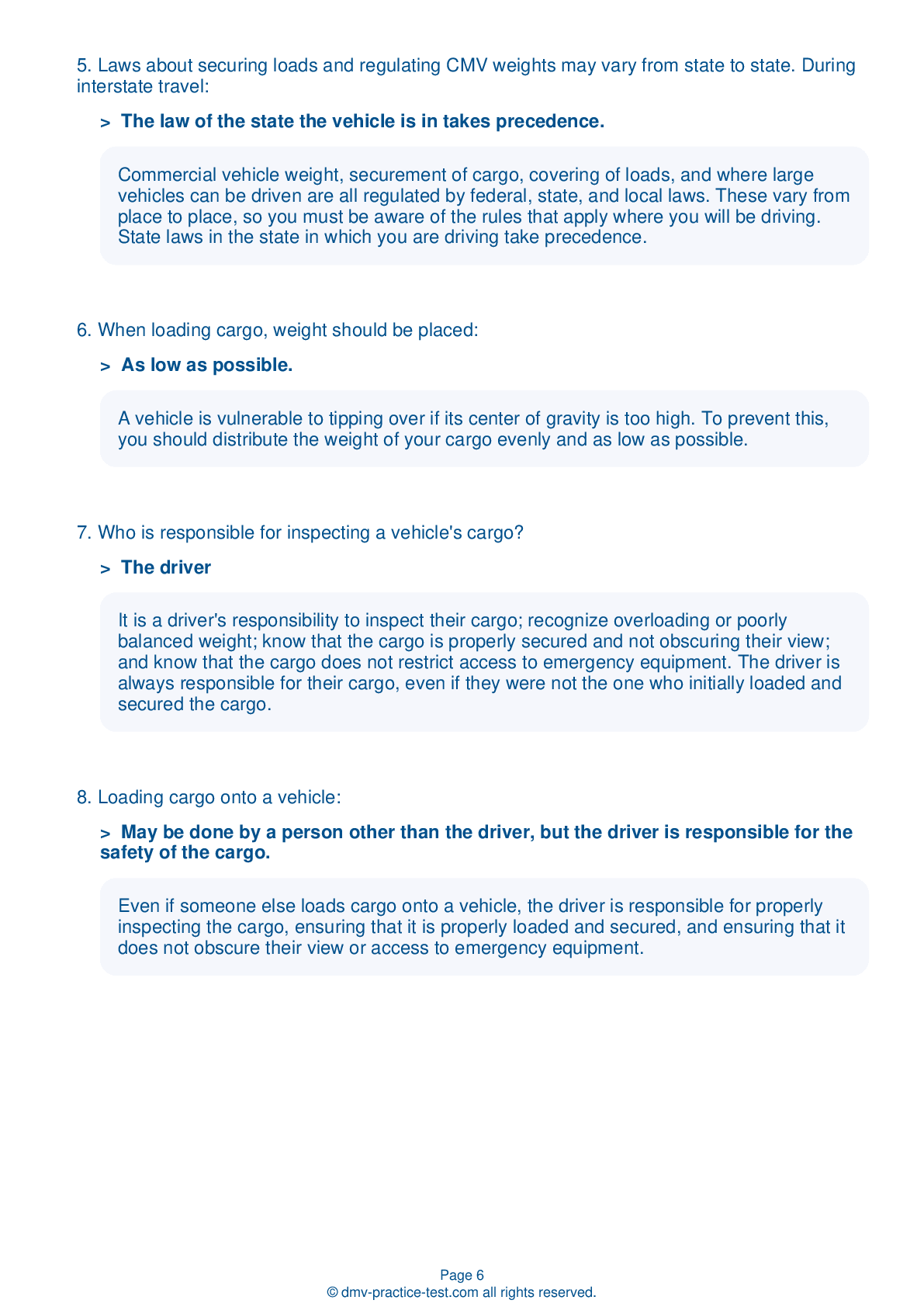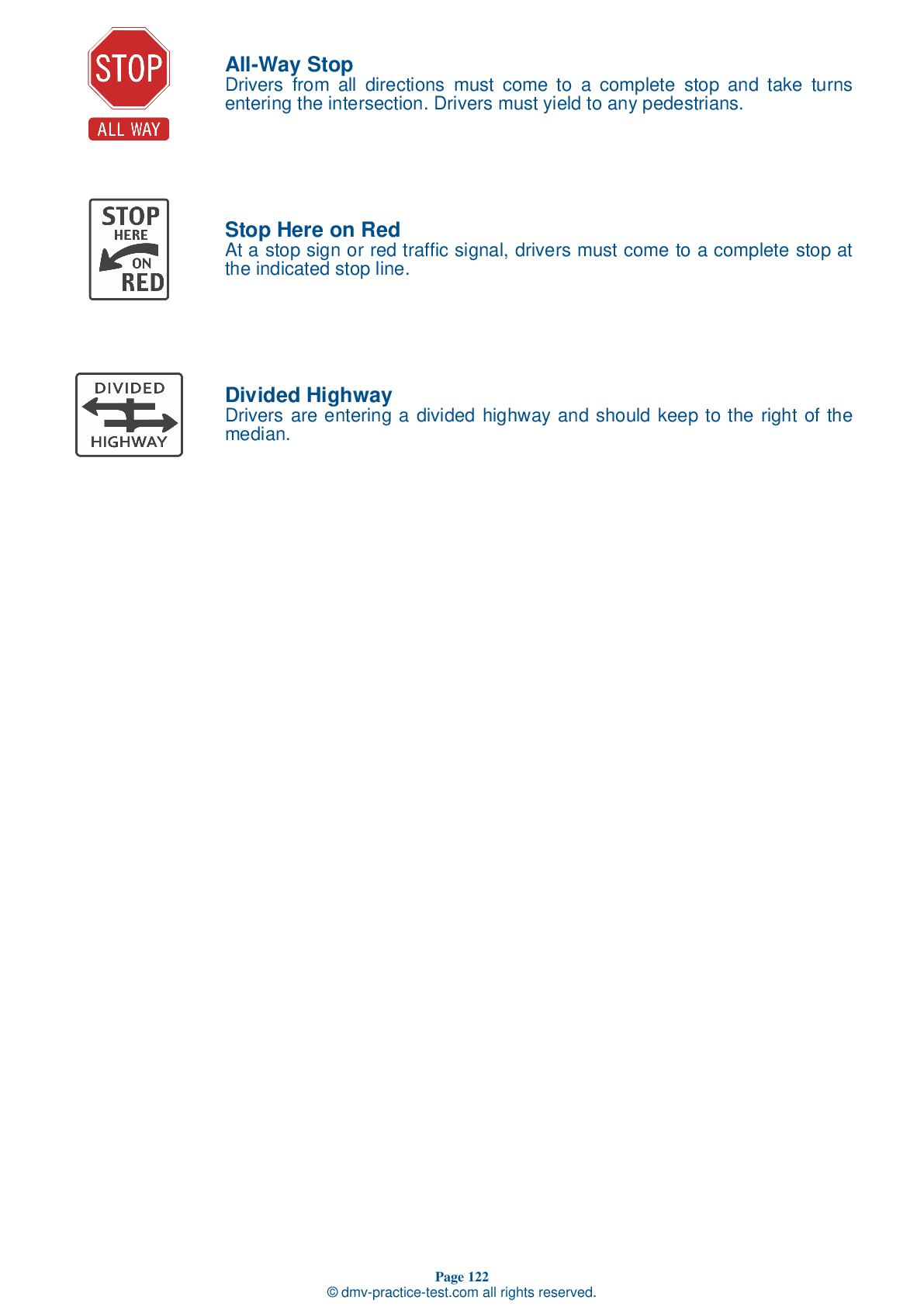Combination Vehicles Practice Test | Connecticut 2025 #1
Train for FREE online with our Connecticut CDL combination vehicle test. The official exam test consists of several obligatory parts, with all of them checking your knowledge of different blocks of road rules. If you need to obtain a CT combination license in 2025, practice as much as possible. Free sample tests published on our website will help you check and improve your knowledge and boost your grades. Please bear in mind that DMV requirements for issuing a combination license may vary from state to state.
1 . When driving a vehicle equipped with an Anti-Lock Braking System (ABS), brakes should be applied:
When driving a vehicle with ABS, you should brake in the same manner as you would in a vehicle without ABS.
2 . How much space should be between the upper and lower fifth wheel?
Before a trip, be sure to inspect all couplings. There should be no space between the upper and lower fifth wheel.
3 . When coupling a trailer:
When coupling, make sure you couple matching glad hands. They are often color-coded to help drivers avoid mistakes. Typically, blue is used for service lines and red is used for emergency lines.
4 . Trailers with low underneath clearance can present challenges when driving over:
Railroad-highway crossings may be difficult to cross when pulling a trailer with a low underneath clearance. In particular, both low-slung units and single-axle tractors pulling long trailers are especially challenging to drive over raised crossings.
5 . Combination vehicles:
Combination vehicles are usually heavier and longer than single commercial vehicles. For these reasons, they usually require more driving skill than single commercial vehicles.
6 . Fully-loaded rigs:
Because the weight of cargo gives them a higher center of gravity, fully-loaded rigs are 10 times more likely to roll over in a crash than empty rigs.
7 . All trailers made after ____ must be equipped with Anti-Lock Braking Systems (ABS).
All trailers and converter dollies manufactured on or after March 1, 1998 must have Anti-Lock Braking Systems (ABS).
See the exact questions that will be on the 2025 Connecticut DMV exam.
99.2% of people who use the cheat sheet pass the FIRST TIME
Lillian MCcranie explains how our CDL study guide was helpful in passing the exam and recommends it to everyone.
Cameron tells us how he purchased the CDL exam, and found it to be a useful tool which helped him pass the exam and find a job.



